Basic Suturing and Wound Management
The suture tray
The basic emergency department suture tray has the equipment necessary to manage a simple laceration.
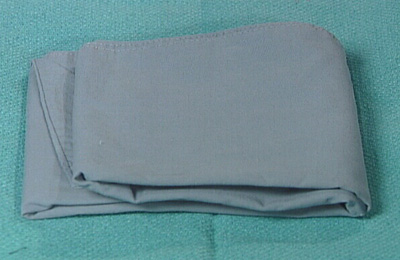 |
Surgical Drapes
The surgical drapes should be used to completely surround the wound and a portion of the surrounding sterile field. |
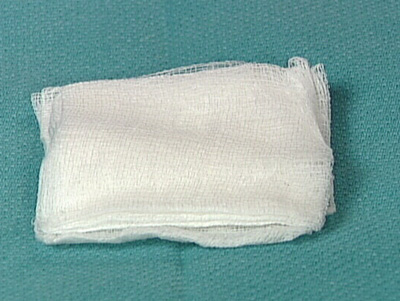 |
4" x 4" Gauze The gauze is used to clean the wound area. |
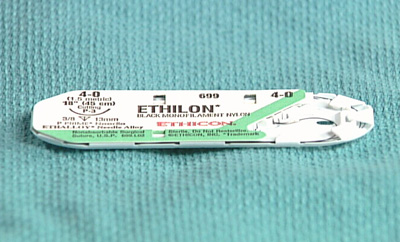 |
Suture Materials - 4.0 and 6.0 For facial wounds, a smaller gauge suture such as 6.0 is used. For wounds under greater stress and of less cosmetic importance such as a thigh laceration, a 4.0 suture would be appropriate. |
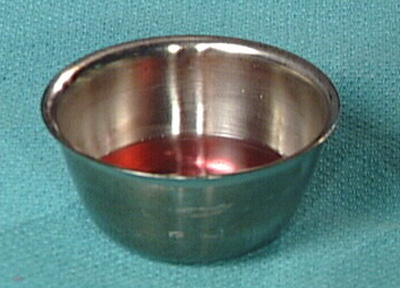 |
Antiseptic Solution and Saline The antiseptic solution is for cleansing the skin around the wound and saline is used to cleanse and irrigate the wound itself. |
 |
Syringe with splash cover Wound irrigation has been shown to be the most effective means of removing debris and contaminants. The splash cover helps to avoid exposure to the patient's blood and body fluids. |
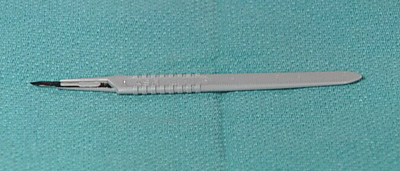 |
Scalpel The operator may request a scalpel to allow a wound to be extended or wound edges to be debrided. |
 |
Straight Hemostat The straight hemostat can be used for blunt dissection. It should not be used to clamp blood vessels or tissues since it will injure these structures. |
 |
Curved Hemostat The curved hemostat can be used for blunt dissection. It should not be used to clamp blood vessels or tissues since it will injure these structures. |
 |
Toothed Forceps The toothed forceps are used to grasp the skin edges while suturing. They tend to be less traumatic than non-toothed forceps but can damage tissues if applied forcefully. |
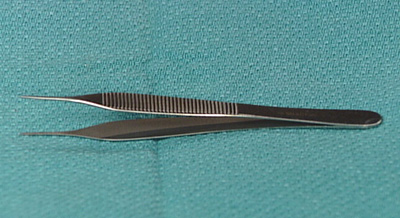 |
Non-toothed Forceps This is considered to be a more traumatic instrument than its toothed counterpart for grasping tissue. |
 |
Needle Driver The needle driver is reinforced instrument designed to grasp the suture needle. |
 |
Scissors The scissors are intended only to cut sutures. They have no rule in the dissection or removal of tissue. |